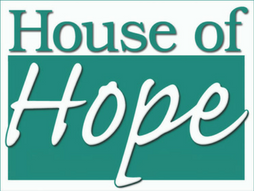St. Lucie’s first ‘Dare to Care’ event to spotlight countywide poverty
BY CHARLES CALOIA | Correspondent, St. Lucie Voice
Poverty in St. Lucie County can’t be easily defined in one image or demographic.
In an effort to promote awareness of poverty, House of Hope will be hosting their first “Dare to Care Poverty Simulation” in St. Luc-ie County on Oct. 2 at 8:30 a.m.
The Boys & Girls Clubs of St. Lucie County’s Westside Club Complex, 3361 S. Jenkins Ave., will host the simulation and discussion on local poverty with space for up to 80 participants.
“We have already registered about 59 people, so we are almost at capacity,” said Lau-ren Mustelier, House of Hope’s director of engagement and development.
Mustelier and Elizabeth Barbella, CEO of the Community Foundation Martin-St. Lucie, explained “Dare to Care’s” format and history in a recent interview.
“Some of our partners in St. Lucie wound up coming to a poverty simulation and were so moved by it,” Barbella said of “Dare to Care’s” earlier events in Stuart.
According to Mustelier, other sponsors on the event’s planning committee include the St. Lucie Children’s Service Council and GraceWay Village.
The “Dare to Care” simulation’s primary objective focuses on demonstrating the experiences of people living on or below the poverty line throughout the average work week. Mustelier said the simulation intends to “increase understanding and empathy around the people who we serve and [show] what the state of poverty looks like.”
Each “Dare to Care” participant takes on a new identity – a different age, language, family, health conditions, even a new gender or race – to illustrate unique economic vulnerabilities among a diverse population.
“You might be a single mother of two, [or an] 8-year-old child who’s struggling with health issues and living with their grandparents,” Mustelier said.
Once assigned to their roles, participants begin the simulation with info packets outlining different family units and situations.
Participants are then thrust into four 15-minute workweeks to tend to their needs as best as possible while surrounded by desks representing their neighborhood.
“Think of the things you would typically see in a community,” Mustelier explained. “A grocery store, a doctor, the social services agency, a school, an employer.”
The characters each participant plays can be beset by other challenges including illness, injury, or losing a job, car or family savings.
“The families are meant to represent the different faces of poverty in the community,” Mustelier said. “There’s a wide, wide variety of what they might experience.”
House of Hope advertises the St. Lucie “Dare to Care” simulation with a sobering statistic: An estimated “51 percent of households in St. Lucie County are struggling to make ends meet.”
They derived the statistic from United Way’s latest ALICE, or “Asset Limited Income Constrained, Employed,” report covering nationwide poverty and wage disparity published in May.
St. Lucie County has an estimated population of 358,704 people living in 134,215 households, according to the latest U.S. Census figures.
The United Way calculated the ALICE threshold that 51 percent of St. Lucie residents fail to meet as a minimum annual “household survival” budget of $66,324 for a family of four and $28,344 for a single adult.
United Way’s records show that 49,217 households are living under the ALICE threshold in 2022 compared to 46,180 in 2021.
United Way also found that 14 percent of St. Lucie households fell below the federal annual poverty income of $15,060 for a single adult and $31,200 for a four-person family.
Households under the poverty line saw a large uptick to 18,709 in 2022 from 12,534 in 2021, United Way records show.
ALICE reports show that 69 percent of Fort Pierce’s 17,971 households fell below the threshold; 46 percent of Port St. Lucie’s 82,788 households also fell beneath the same line.
Barbella said some of her crucial observations in St. Lucie County’s impoverished population include larger numbers of single-parent households.
United Way records show 84 percent of single-mother and 67 percent of single-fa-ther households in St. Lucie fall under the ALICE threshold.
White people make up 59 percent of the St. Lucie County residents living under the ALICE threshold, while African-Americans and Hispanics both account for roughly 16 percent each.
“We can’t [fully] emulate the challenges that someone might experience as a result of race or ethnicity,” Mustelier said. “We do our best to make sure they’re, at least, represented in the room.”
House of Hope, who marks 2024 as their 40th year in operation, held their first “Dare to Care” event on Jan. 17, 2018, at Indian State River College’s Chastain Campus in Stuart.
Barbella credits GraceWay Village Operations Manager Chrystal Netherton tapping Mustelier with bringing “Dare to Care” to St. Lucie County after being part of an installment at Stuart’s Blake Library.
“We had some people in the room that were like, ‘oh my God, you have to bring this up to St. Lucie County,’” Mustelier said.







